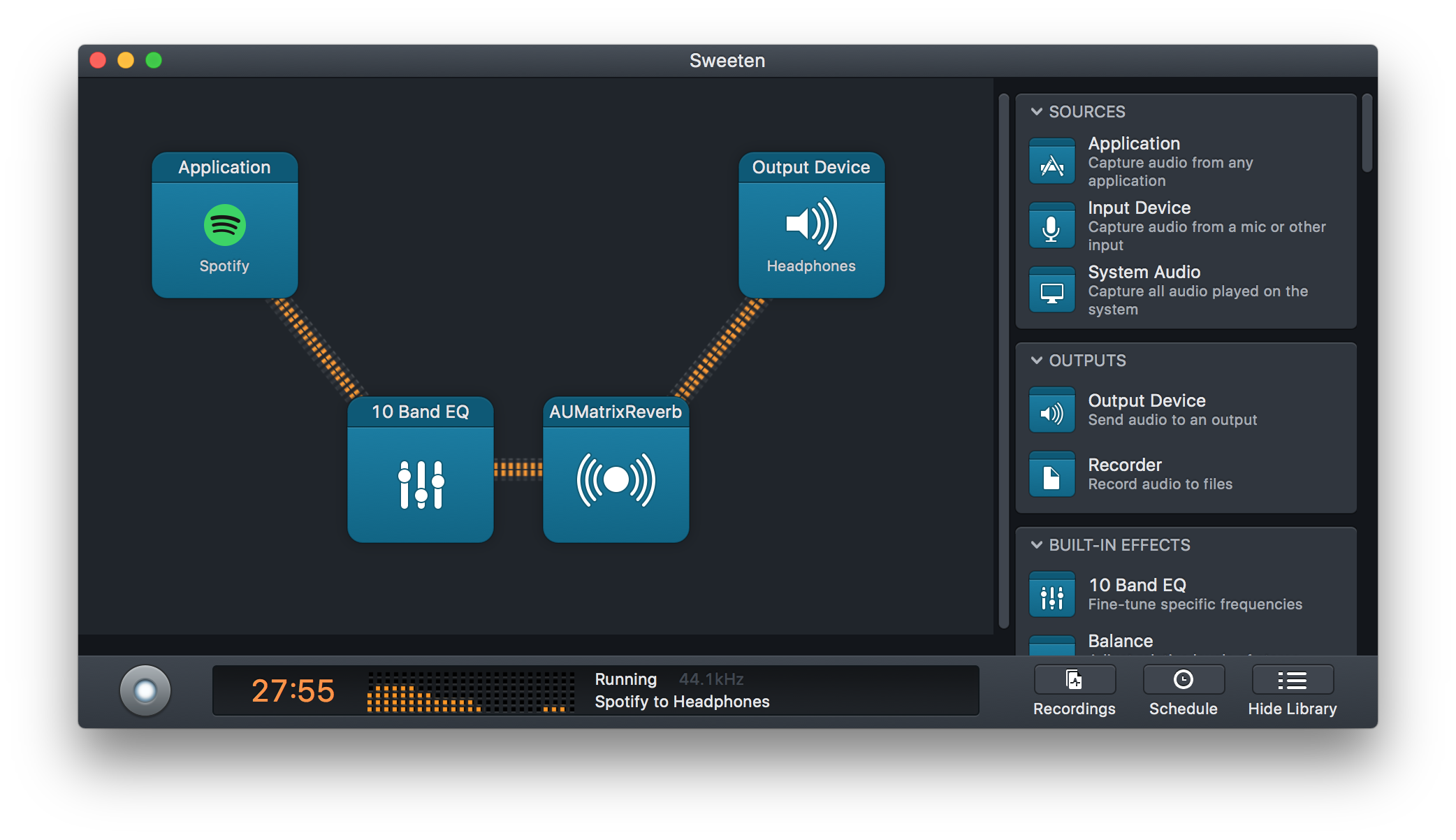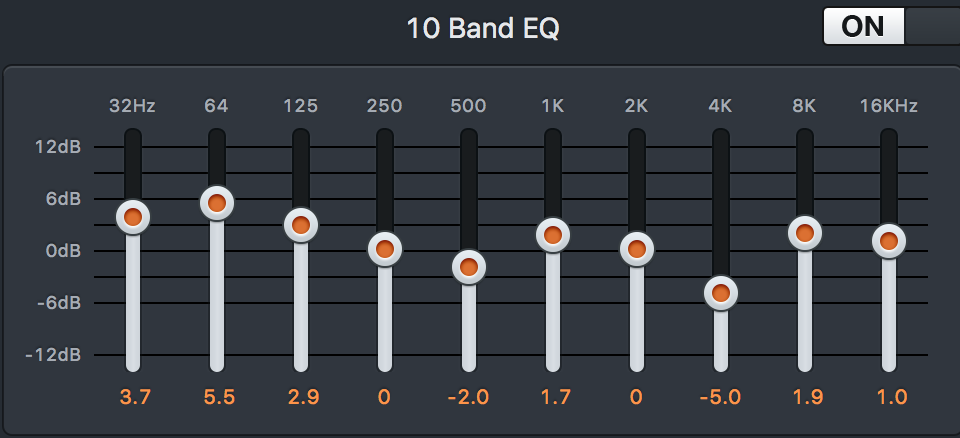Improve your Mac’s Audio Output
I’m a huge audio person, but I am not an audiophile.
I think you can have amazing sound without spending hundreds or thousands of dollars of equipment or even buying additional equipment. It used to be with analog audio you needed specialized equipment to produce amazing sound. But in the digital era, almost all processing is done through DSP and computers are great at that. Don’t get me wrong, poor audio equipment will never match expensive systems but I think all audio systems can benefit from a little boost with DSP.
It used to be that Windows Media Player and Winamp (remember that?) had built-in EQs and effects. But newer apps like Spotify, Pandora and others have ditched those features in the name of simplicity.
A lot of PC soundcards actually come with built-in EQ settings that you can access in the driver settings. With newer Windows 8 and 10 systems, they tend to not be included with the Microsoft certified driver and require you to go out and install the “real” driver from the manufacturer. If you can’t get that driver, then you are stuck with the built-in Windows driver which does include very basic effects like bass/treble and loudness equalization (which actually softens music).
Only recently have I switched over to Mac for all of my development needs and I was really expecting Apple users to demand awesome audio feature. But Macs have less audio settings than Windows.
Recently I have been looking into fixing this and even going the route of adding additional hardware to fix this problem. I was looking at adding professional level reverb and EQ units into my audio chain for a few hundred dollars. I then stumbled on a $120 Mackie 4-channel mixer that has built-in DSP effects, a simple 5 band main EQ and 2 band channel EQ. But I finally found a cheaper and better solution, Rogue Amoeba Audio Hijack, though it is still $50.
This single program will snag the audio from an app and feed it into an effect chain before releasing it back to the output device.
The effect change can have any number of the effects below:
- 10 Band EQ
- Balance
- Bass & Treble
- Channels
- Declick
- Dehum
- Denoise
- Low Pass Filter
- Mono Enhancer
- Pan
- Volume
- Sync/Delay
- Time Shift
- Bandpass
- Distoration
- Dynamics
- Multiple Filters (Hi/Low Pass and shelf)
- Matrix Reverb
- Multiband Compressor
- Band EQ
- AUNetSend/Receive
- Pitch
- Sampler
My favorites are 10 Band EQ and Matrix Reverb.
An EQ allows you to equalize or, in my case, overemphasis certain low/high frequencies. I like to overdrive the bass 32Hz-125Hz to get a solid foundation sound and wake up my subwoofer. Then under emphasize the 500Hz band to give it contrast because if you just overdrive everything, you are just turning up the volume. Instead this gives the bass even more power without clipping or distorting. I then give the EQ two more spikes, one around human voices at 1K-2K and another well over it at 8K to give some “sibilance” or to make voices easier to understand along with picking up the high hats percussions.
EQs need curvy patterns to maximize the audio through under and over emphasizing
Reverb is adding an audio echo to the music to simulate the sound of a live concert echoing off the surrounding. Reverb also helps to smooth out harsh vocals and is often used heavily in karaoke systems to make less experienced singers sound better. The biggest control is the wet/dry mix value which controls the dry (original audio) amount compared to the wet (echo audio), and you normally won’t go over 50% blend unless you are going for a dream-like effect (100%). Beyond that, just play around with the remaining settings until you find the perfect ambience to your music.



